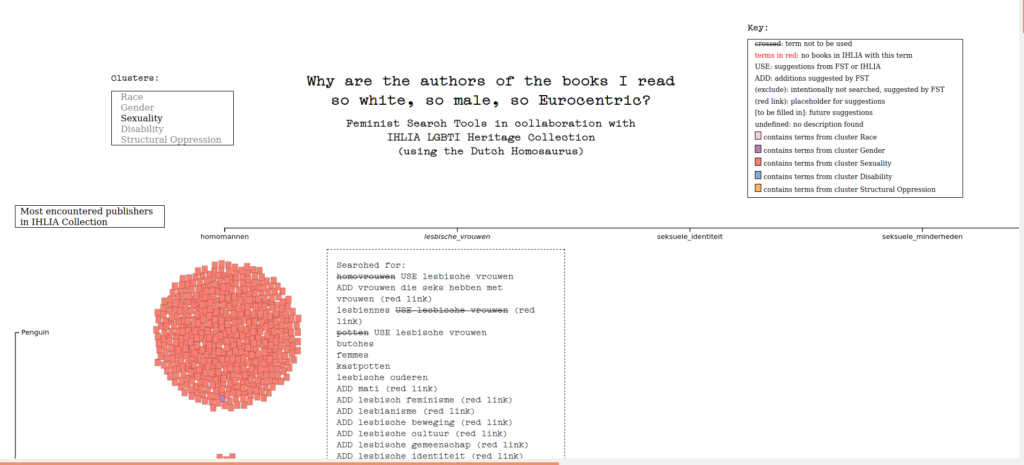
Screenshot FST Visualization Tool (version 2) based on the IHLIA catalogue and the Homosaurus, 2020.
Visualisation Tool, close view: contains terms from cluster “sexuality”
The question of “Why are the books I read so white, so male, so Eurocentric?” is central at the top. Selected are 5 clusters on the top left: Race, Gender, Sexuality, Disability and Structural Oppressions. The x-axis is composed of a selection of Homosaurus terms linked to a certain cluster. The y-axis depicts the 20 most encountered publishers in the IHLIA Heritage Collection catalogue.